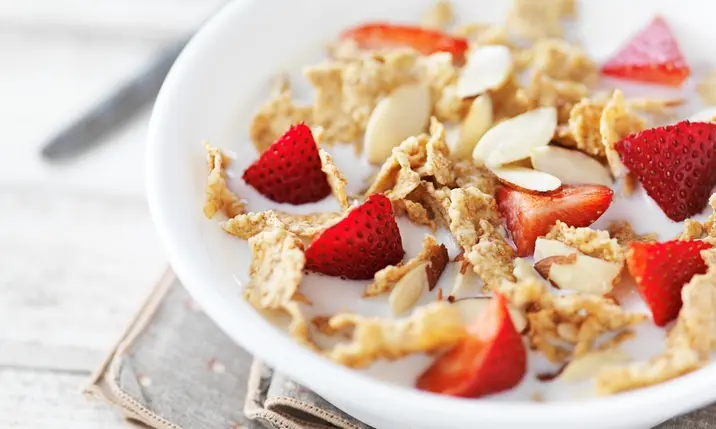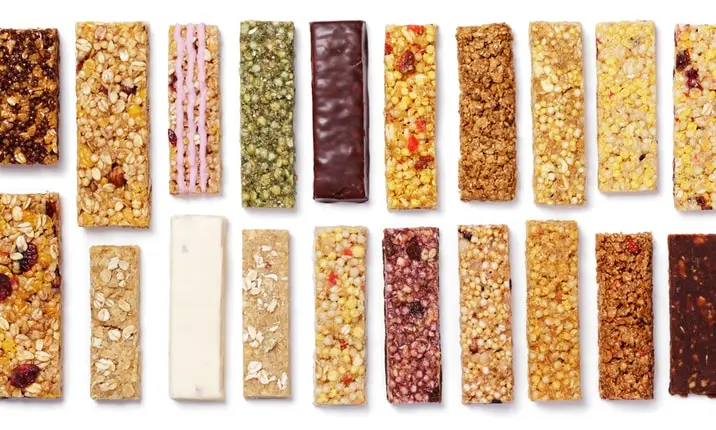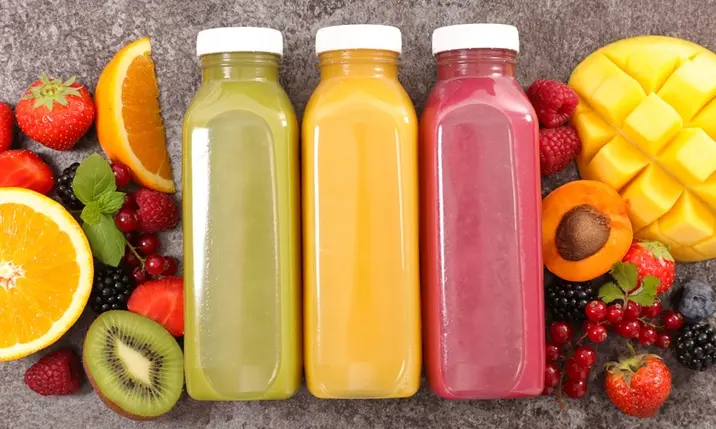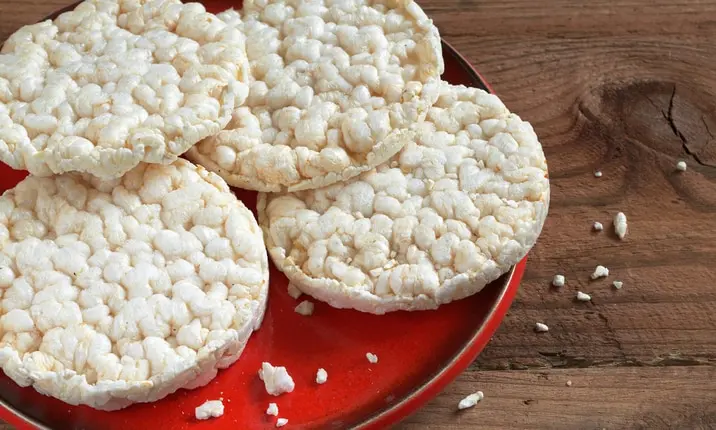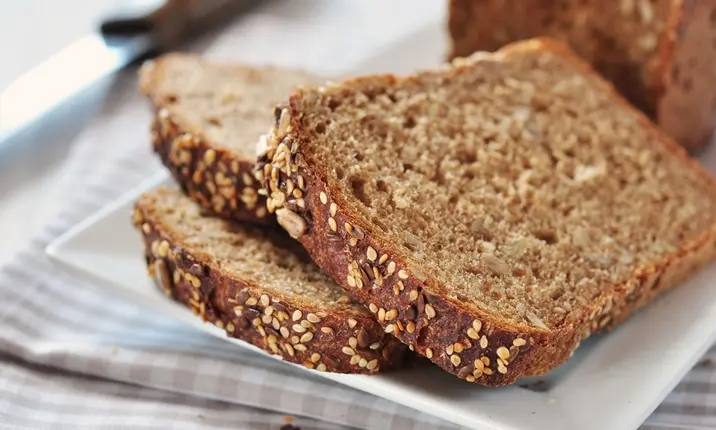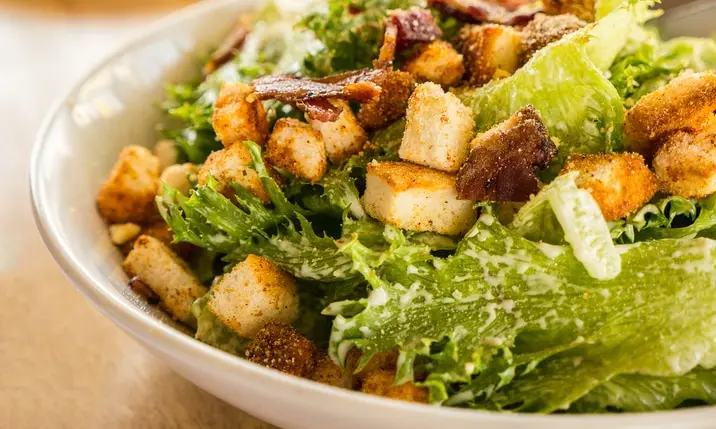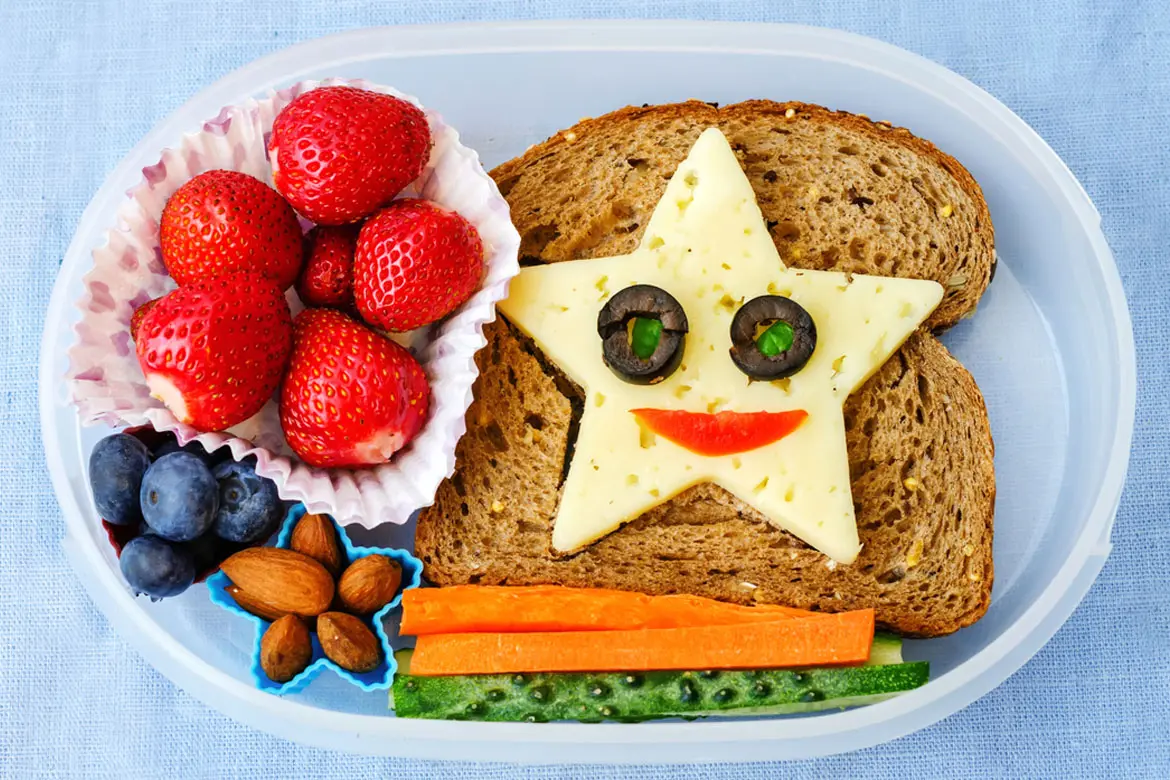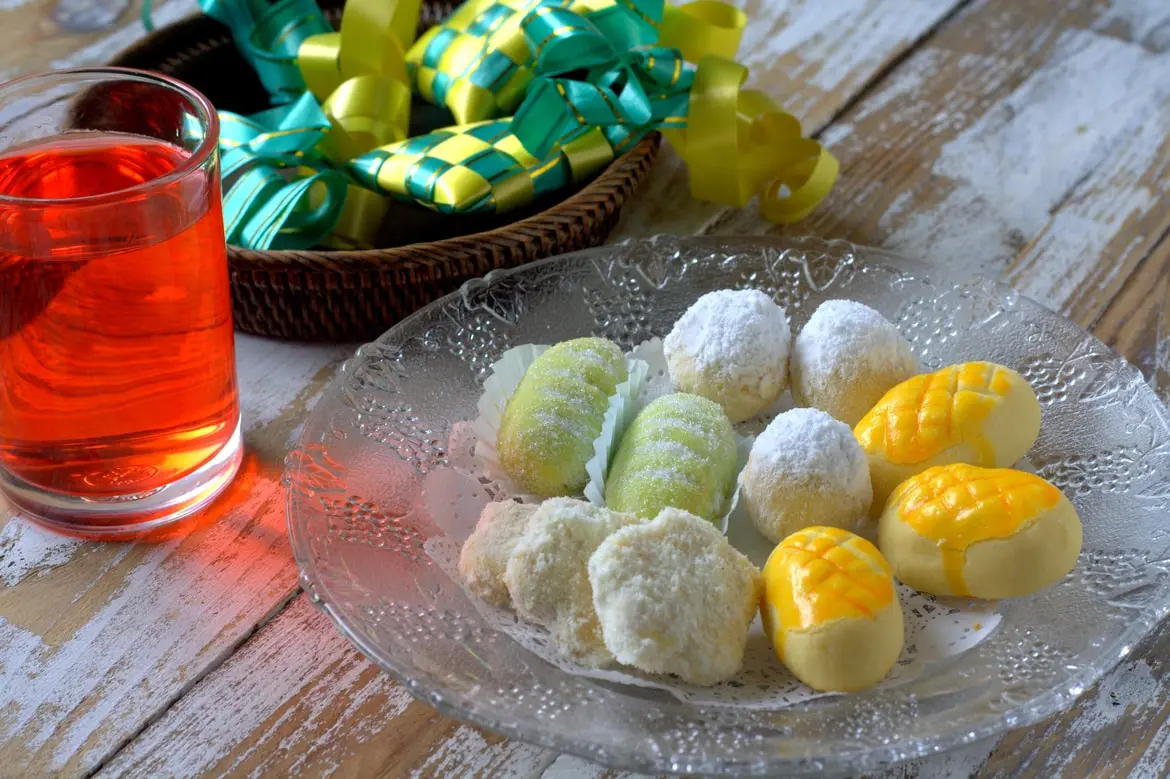
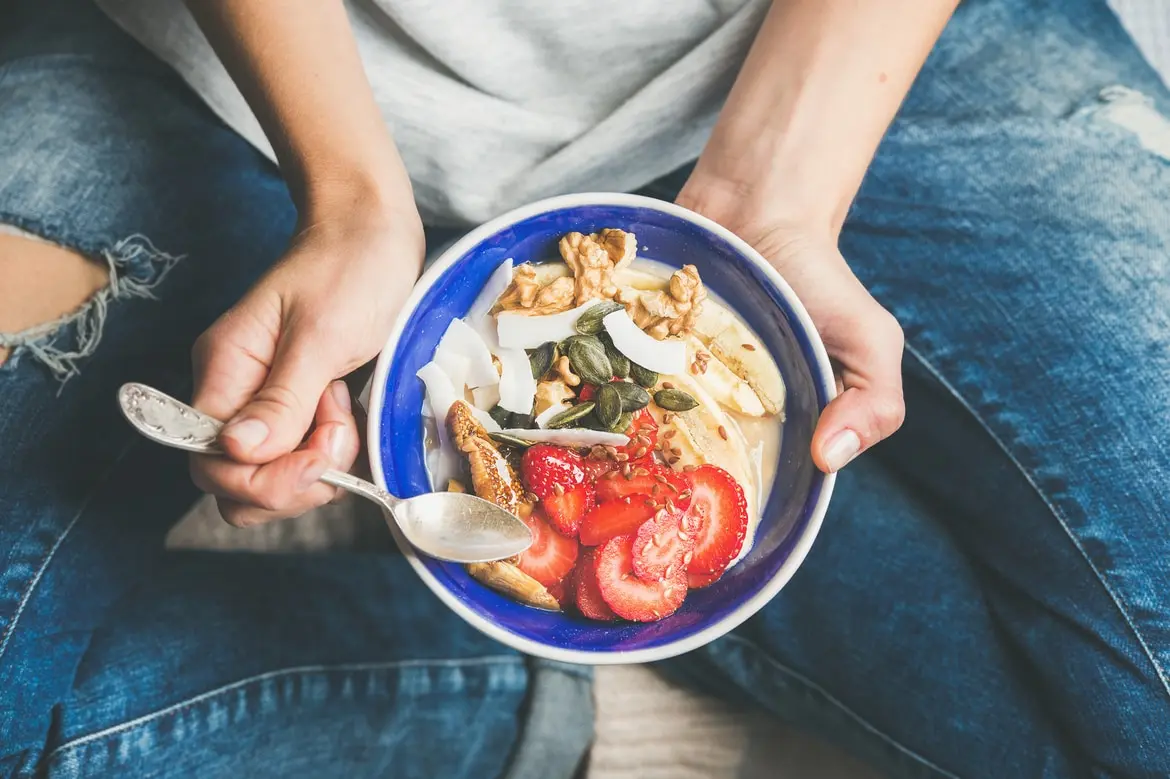
Source: Shutterstock
8 Foods You Think Are Healthy – But Are They?
Last updated: Tuesday, June 19, 2018 | 5 min reading time
Eating healthy is easy when we know what to look out for to make the right choices. But what if there are misleading foods that seem healthy but aren't?
Are you sure you are making the right choices when planning your diet or stocking up on groceries?
The sad truth is, there are plenty of foods that are touted as 'healthy options' when they are actually the opposite. You may be unknowingly influenced by the nutrition claims on the food packaging.
Here are some tips to help you make better food choices!
Wholegrain cereals
Starting the day with a small bowl of cereal can't be unhealthy, right? Unfortunately, it can.
Wholegrain cereals may appear to be healthy, but did you know that they can be high in fat and sugar despite its high fibre content? Research has also shown that a high intake of sugary food may contribute to the risk of getting type 2 diabetes and cardiovascular disease.
Just because the box says 'ow-fat' or 'high-fibre' doesn't necessarily mean the contents are healthy. If you check out the ingredients, you'll find that some cereals are highly processed and contains added sugar and sometimes salt.
TIP: Look for cereals with less than or equal to 2g of sugar per serving, or less than or equal to 5g of sugar per 100g. Added sugar comes mainly from ingredients like honey, corn syrup, sugar-coated granola or dried fruit.
The recommended total fat content is less than or equal to 3g fat per 100g. It is also good to check the list of ingredients, as fat can come from healthy sources like nuts and seeds, and also unhealthy sources like added hydrogenated fat. Certain cereals may also be higher in salt. Look out for cereals with less than or equal to 120mg of sodium in 100g if you want an option with lower salt content.
Alternatively, you can look out for the Healthier Choice Symbol on the cereal box. Oatmeal or wholegrain cereals are also healthier options.
Granola bars
Granola is a mixture of rolled oats, muesli, grains added with dried fruits, and nuts and seeds. Manufacturers may add corn syrup, brown sugar or white sugar to enhance the taste, and some may coat the bar with chocolate or yoghurt. All these add sugar to the granola bars, and thus eating too many of these may contribute to excess sugar consumption.
TIP: An alternative easy and on-the-go snack would be a handful of plain nuts or a serving of fresh fruit.
Fruit juice
Did you know that fruit juice also contain sugar, just like soda?
It's no surprise that fruit juice is often perceived as healthy – the clue as to why is in the name – but most fruit juices on the market have sugar added as part of the ingredients to improve taste.
All fruits contain fruit sugar, so why does this matter?
When you eat the whole fruit, you may only take one serving at once, but with fruit juice, more than one serving of fruits would have made up the glass of fruit juice, resulting in you consuming more sugar.
A huge amount of sugar is then absorbed by the body to make energy, and any surplus energy not used by the body gets turned into fat. Plus, if you're drinking juice as a substitute for whole fruit, you'll be losing out on fibre which is believed to help regulate our appetite, blood sugar level and bowel.
TIP: Skip store-bought fruit juices! You're better off eating whole fruit.
Rice cakes
Surprised? Even though they are generally low in fat and calories, rice cakes have a lower content of vitamins and minerals. In fact, most single rice cakes only have 1 – 2g of protein and fibre. They are basically just carbs sprinkled with salt. You will tend to overeat as you may think it is low in calories.
TIP: You're far better off reaching for a high-fibre wholemeal or wheat cracker!
Frozen yoghurt
We're sorry to say that frozen yoghurt isn't as much of a guilt-free treat as it appears! Frozen yoghurt not only contains those gut-friendly probiotics but also sugar. Higher sugar content will be found in flavoured frozen yoghurt. According to the Health Promotion Board, a half-cup serving (150g) may contain as much as 18g of sugar. And because we think it's healthier than ice cream, we're far more likely to sit and eat loads in one go.
TIP: For this reason, you're better off limiting your portion sizes to half a cup at a time and only indulging on occasion. You can also try recreating the magic at home by adding fresh fruits, nuts or seeds to a bowl of Greek yoghurt.
Wholewheat bread
Wholewheat bread is not only packed with carbohydrates but also vitamins and minerals. It also contains fibre, and thus may provide the feeling of satiation. However, be careful as eating too much wholewheat bread may elevate your blood sugar level.
TIP: Using wholewheat bread to prepare sandwiches is a good option, but remember, portion size matters!
Sushi
It's easy to assume all sushi is healthy because it's fresh, and it usually contains veggies and protein-rich fish.
Yes, the veggies often found in sushi, like seaweed, mushrooms, carrots, cucumbers and asparagus, are good for you. But if you eat sushi with too much soy sauce, your salt intake will be high. Sauces like mentaiko and mayonnaise, as well as ingredients like deep fried prawns or lobsters stuffed in the sushi, will also increase the overall fat content of your meal.
TIP: Deep-sea fishes like king mackerel, tuna, salmon and halibut may be high in omega-3 but could also be high in mercury. Try to limit your deep-sea fish intake to 2 – 3 servings per week.
Take care over the type of sushi you choose, and consume with moderate amount of condiments and soy sauce. Beware of food hygiene as sushi is mostly consumed raw, and avoid eating sushi too frequently!
Salads
Yes, there is such a thing as a healthy salad! But what about the ingredients or toppings you add to it?
Here are some ingredients that may turn a healthy salad into an unhealthy one:
- Bacon bits
Processed meat that adds salt and saturated fat, and may increase the risk of heart disease - Regular cheese
When served in large portions, it can increase the overall sodium and saturated fat intake - Salad dressings
Creamy dressings, like ranch, mustard and mayonnaise are often served in excessive amounts and are high in saturated fat, containing up to 200 calories per serving
TIP: For a healthier option, try choosing a salad with beans or peas, and consume a moderate amount of fat-free dressing.
Everything That Makes Your Healthy Salad Unhealthy. (n.d.). Retrieved 2 May 2018 from http://www.thelist.com/23116/everything-makes-healthy-salad-unhealthy/
Gunnars, K. (2013, February 6). Is Bread Bad for Your Health? Retrieved 2 May 2018 from https://www.healthline.com/nutrition/why-is-bread-bad-for-you
Gunnars, K. (2017, June 4). Fruit Juice is Just as Unhealthy as a Sugary Drink. Retrieved 2 May 2018 from https://www.healthline.com/nutrition/fruit-juice-is-just-as-bad-as-soda
Palsdottir, H. (2015, October 16). Breakfast Cereals: Healthy or Unhealthy? Retrieved 2 May 2018 from https://www.healthline.com/nutrition/are-breakfast-cereals-healthy
Praderio, C. (2015, February 13). 15 Healthy Foods That Aren't. Retrieved 2 May 2018 from https://www.prevention.com/food/healthy-foods-are-bad-you
Gunnars, K. (2013, February 6). Is Bread Bad for Your Health? Retrieved 2 May 2018 from https://www.healthline.com/nutrition/why-is-bread-bad-for-you
Gunnars, K. (2017, June 4). Fruit Juice is Just as Unhealthy as a Sugary Drink. Retrieved 2 May 2018 from https://www.healthline.com/nutrition/fruit-juice-is-just-as-bad-as-soda
Palsdottir, H. (2015, October 16). Breakfast Cereals: Healthy or Unhealthy? Retrieved 2 May 2018 from https://www.healthline.com/nutrition/are-breakfast-cereals-healthy
Praderio, C. (2015, February 13). 15 Healthy Foods That Aren't. Retrieved 2 May 2018 from https://www.prevention.com/food/healthy-foods-are-bad-you
 Brain & Spine Care
Brain & Spine Care